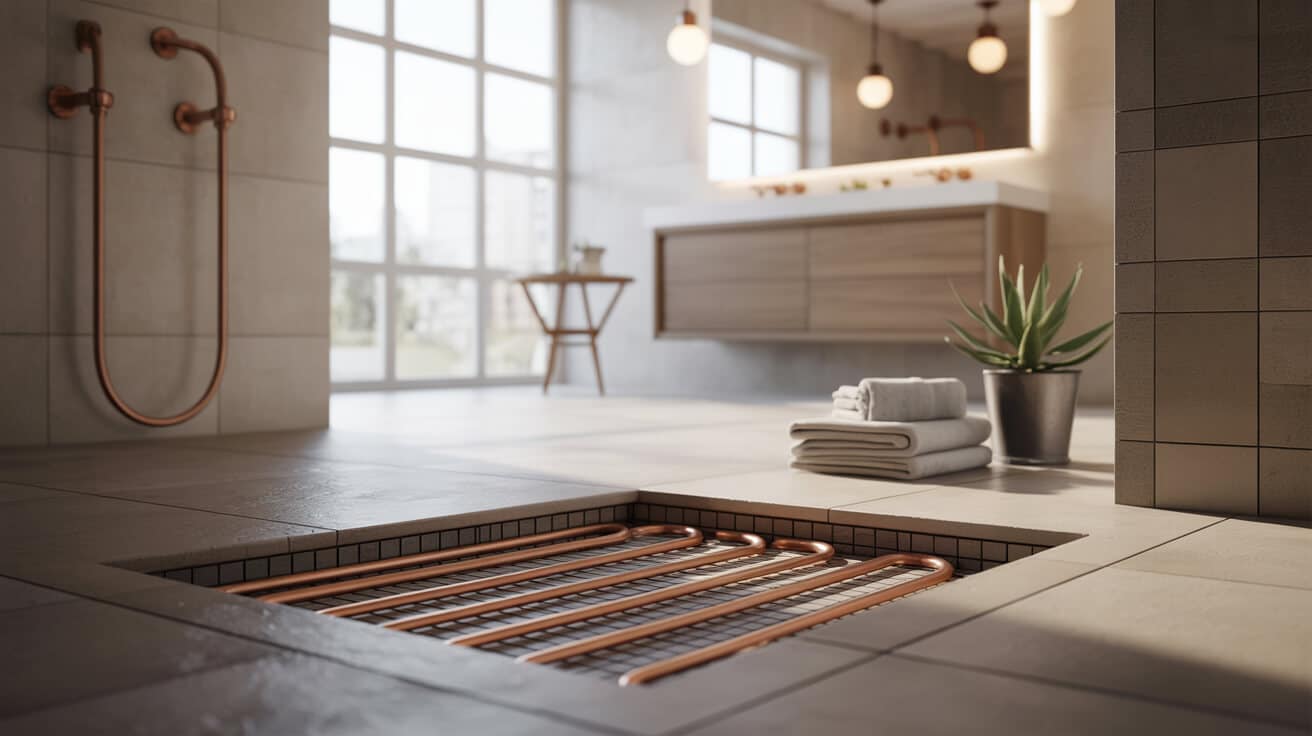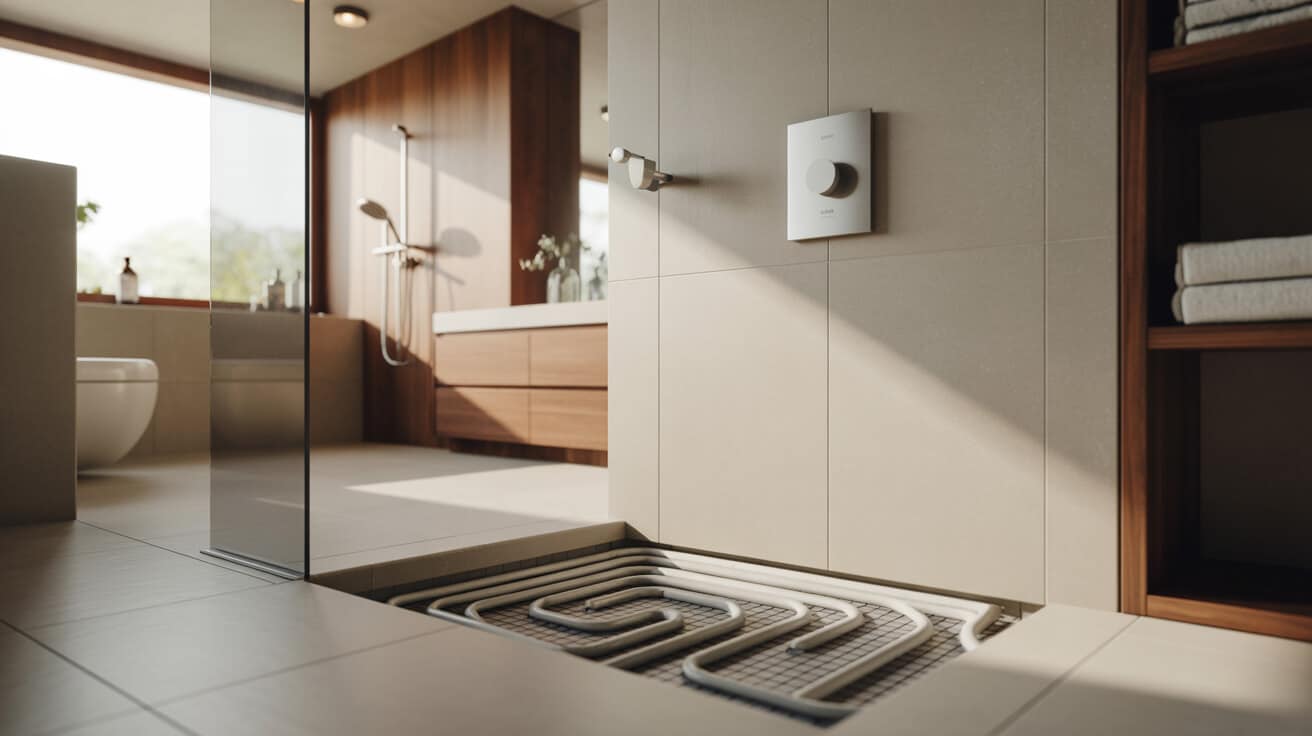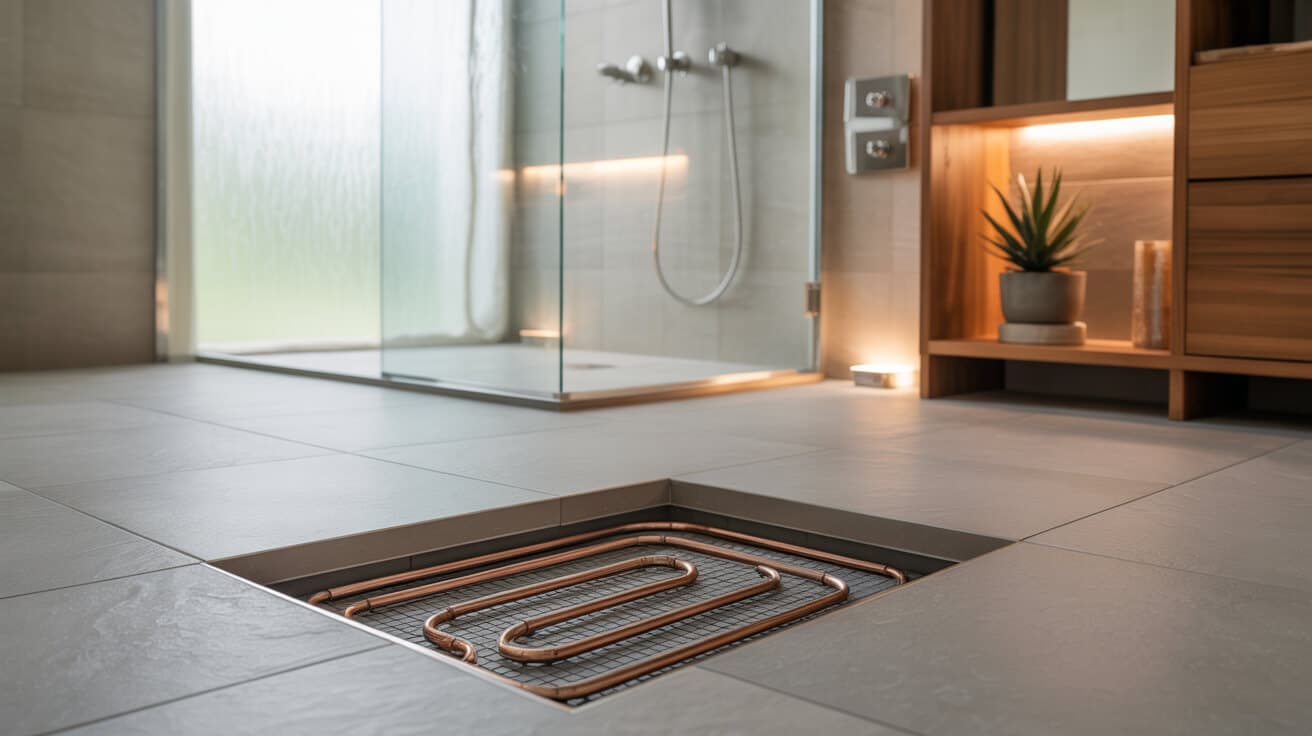Advancements in climate control have shifted the expectations of property owners, landlords, and facilities managers across the United Kingdom. weather compensation not only alters how heat is distributed within your property but also transforms the economics of comfort. Constantly adaptive, these systems eliminate the historical dichotomy between warmth and energy conservation by delivering only as much heat as current outdoor conditions require. Weather-based controls thus maintain a balanced floor temperature without the cycles of overheating and chilling that are common with conventional timers or static thermostats.
The adoption of weather compensation by major providers, including Plumbers 4U, reflects a broader industry movement toward precision, system transparency, and regulatory foresight. Installations are no longer judged solely on their immediate performance but on their contributions to annual fuel savings, environmental impact, and compliance with legally enforced minimum standards. System upgrades and retrofits, when executed by qualified professionals, offer measurable improvements for property managers and residents alike—signalling both a technical and a trust-based evolution in heating provision.
Weather compensation underfloor heating is now widely recognised as a future-proof feature for single homes, multi-unit residences, office complexes, and education or care settings. For managers of multiple dwellings, the technology grants secure confidence in both occupant experience and asset value, while for homeowners it delivers a sense of everyday stability that is subtle, persistent, and financially rewarding.
Lead
Weather compensation refers to the dynamic regulation of underfloor heating water temperature, aligning it with detected outdoor conditions. Control algorithms calculate optimum flow temperatures for the underfloor circuits, raising them on colder days and lowering them as ambient temperatures rise. By continuously tuning energy delivery, these systems maintain consistent warmth underfoot while limiting the frequency of boiler or heat pump operation.
Properties fitted with weather-compensated underfloor heating see a marked reduction in energy waste, particularly during shoulder seasons when fixed controls can lead to chronic overheating. The regulatory environment now strongly favours these adaptive solutions, supporting your company’s achievement of required EPC or MEES benchmarks and offering credentials that reinforce asset reputation and rental eligibility. Whether your focus is on occupant comfort, compliance, or long-term cost containment, weather compensation is engineered to address the full arc of your heating needs.
Etymology or name origin
The phrase “weather compensation” has its origins in mid-twentieth-century heating control engineering, emerging as systems designers aimed to move beyond fixed, manually regulated interior climates. Early central heating schemes relied on thermostatic switches or timer-based logic, but these could not address the persistent mismatch between external weather and internal warmth. Engineers began to introduce mechanisms that “compensated” for outdoor temperature swings by actively modulating hot water supply, coining terminology that quickly entered trade specifications and operating manuals. By the 1980s, the term had become a standard descriptor of any control that references external weather to automate indoor comfort.
Overview and context
Principle of operation
Weather compensation underfloor heating uses a dedicated outdoor temperature sensor, positioned on a shaded north or northwest wall of your building, to supply a continuous real-time feed to a central controller. This controller is programmed with a compensation curve—a set of parameters mapping outside temperatures to optimal water temperatures delivered to your underfloor grid. Every adjustment is executed by modulating pumps, mixing valves, and, when present, room-level thermostats, ensuring that heating output rises smoothly as outdoor temperatures drop, and falls as the weather warms.
Role in energy efficiency initiatives
The dynamic response of weather compensation aligns with regional and national mandates for sustainable buildings. In the UK, renters and property buyers increasingly demand EPC-rated homes, and landlords are legally bound to achieve at least MEES minimums before letting or renewing tenancies. Weather compensation installations represent a direct path to improved ratings—not only through lower energy bills but also due to the regulatory credit assigned to adaptive, external-sensor-guided controls. For local authorities, housing associations, and larger property portfolios, this ensures alignment between your compliance obligations and your operational goals.
Integration with other building systems
Modern systems integrate seamlessly with Condensing Boilers, low-temperature heat pumps (including ASHP and GSHP), hybrid heating plants, and digital zoning architectures. Weather compensation acts as the “brain” of the heating plant, receiving external data, modelling the building’s response, and directing not just the underfloor circuits but also radiators or sectorized zones. Leading controllers support standardised communication protocols such as OpenTherm, as well as proprietary APIs furnished by major brands, ensuring interoperability for your maintenance team or facilities contractor.

History
Early concepts and initial implementations
The engineering roots of weather compensation trace to postwar Europe, as engineers investigated ways to moderate fuel consumption in increasingly well-insulated buildings. Early mechanical linkages or mercury switches would trigger boiler operations as outdoor temperatures dropped, but these systems lacked granularity. By the 1960s, prototype electronic sensors began to appear, using analogue logic to approximate the necessary response curve for different wall and floor masses.
Industrial and domestic uptake
Through the 1970s and 1980s, commercial multipurpose developments began to rely on weather-compensated controls, not only to save energy but also to prevent window condensation and ensure thermal comfort across large, variable-occupancy spaces. As circuit boards and firmware replaced relays and switches, controllers advanced rapidly, with underfloor installations specified for their capacity to deliver stable, even heating regardless of outside volatility. When Plumbers 4U and other leading UK companies first adopted these controls, they signalled a departure from purely reactive, thermostat-based systems to proactive, models-based heating management.
Contemporary advancements
The last two decades have introduced digital controllers with multi-zone learning capacity, wireless sensor networking, and user interfaces operable via apps or cloud platforms. Modern compensation algorithms now allow heating professionals to fine-tune system curves for each building, factoring in variation in glazing, insulation, and occupancy. Regulatory incentives such as the UK’s BUS and ECO4 schemes explicitly reward these control upgrades. For you as a property manager, this means tangible support for both initial installation and ongoing optimization, reducing both capital outlay and long-term liability.
Concept and description
System architecture
A functional weather compensation system features several integrated components:
- Outdoor sensor: Feeds continuous temperature data to the central controller.
- Controller unit: Computes water temperature setpoints using compensation curves, sends commands to actuators, and logs performance data for future analysis.
- Flow temperature sensor: Provides live feedback, ensuring that specified corrections are implemented within supply channels.
- Mixing valve or actuator: Blends hot and return water, ensuring precise temperature adjustment at the manifold.
- Manifold and zone valves: Direct the conditioned water into floor circuits, allowing for room-by-room control and optionally for tenant override.
- Room thermostats/app interface: Allow individual users to select preferred minimum and maximum comfort bands, schedule setbacks, or activate demand overrides remotely.
- Optional cloud module or local monitor: Supports remote diagnostics and performance insight for your maintenance contractor or service partner.
Hardware and software components
Selection and placement of outdoor sensors demand careful calibration to avoid false readings due to sunlight or local heat sources. Controllers must possess adequate processing capability to recalculate setpoints instantly and manage concurrent demands across circuits. Leading brands like Heatmiser, Vaillant, Honeywell, Uponor, and Viessmann now produce modular controllers supporting scalable expansion for multi-use buildings. Software/branded apps may include firmware update capabilities, push or SMS notifications, and role-based access for owners, tenants, or service teams.
Communication and control protocols
Most modern compensation systems support data exchange over robust digital communication standards. OpenTherm is commonly used between controller and compatible boilers or heat pumps, while manufacturer-specific APIs (e.g., Vaillant’s eBUS, Worcester’s EMS) enable seamless digital handshakes within branded ecosystems. These protocols ensure maximum interoperability, warranty support, and futureproof upgrades, especially when work is performed by certified professionals such as Plumbers 4U’s installation teams.
Functionality and applications
Domestic and small-scale properties
For homeowners and small freeholders, weather compensation delivers more consistent warmth and dramatic cuts in wasted fuel, especially where occupancy and room use patterns vary. The ability to set and forget minimises cognitive load: your underfloor heating becomes self-regulating, continuously tracking the relationship between outside conditions and internal floor temperature.
Commercial and public sector environments
Large-scale users, including local government officers, educational estate managers, and corporate facilities directors, benefit from the centralization, scheduling, and diagnostic tools provided by advanced compensation platforms. Multi-building portfolios can standardise on system types, streamline compliance monitoring, and achieve significant operational savings over multi-year budgets.
Hybrid and multi-emitter setups
Many contemporary buildings combine underfloor heating with radiators, fan coils, or direct ventilation. In these installations, weather compensation ensures that supply temperature targets are aligned across all emitters. Hybrid setups often require customizable curves or split control paths, configured during commissioning to maximise both comfort and plant efficiency.
Classifications, types, and variants
Manual versus automatic compensation
Historically, compensation curves were manually set and recalibrated by your installer or maintenance provider, typically based on building survey data and seasonal experience. Current automatic models employ adaptive algorithms to learn your building’s heat loss profile, continually refining curve slope, intercept, and delay parameters in response to measured performance. Some leading brands now integrate AI-enhanced auto-learning, removing the need for post-installation adjustment.
Hydronic and electric underfloor compatibility
The majority of weather compensation systems are designed for water-based (hydronic) underfloor grids, since their inherent thermal inertia closely matches the steady-state response modelled by compensation algorithms. While electric underfloor systems can be equipped with weather sensors, their rapid heat-up times require a different control philosophy, usually relying on timed or occupancy-driven logic. Owners of hybrid (water plus electric) properties should consult with qualified engineers to determine the best-fit control suite for your specific circumstances.
Brand and manufacturer differences
Manufacturers differ in calibration range, curve flexibility, modularity, and system integration. Brands like Uponor and Heatmiser are prized for ecosystem modularity and intuitive apps, while Honeywell and Viessmann excel at multi-zone scalability. When engaging a service such as Plumbers 4U, brand selection and configuration are tailored to your building specification, compliance needs, and desired control granularity.

Systems, tools, and methodologies
Design methodologies and sizing calculations
Effective compensation relies on granular modelling of your property’s heat loss, taking into account construction materials, insulation values, and room geometry. Qualified designers or surveyors prepare detailed drawings and digital models, specifying piping layout, circuit spacing, and manifold location consistent with current best practice. Compensation curves are set in line with local weather data, typically referencing a 20-year historical average for your region.
Installer qualification and best practices
Professional installers hold WRAS, manufacturer, or G3 certificates as applicable. Precise sensor mounting, curve validation, and controller commissioning are all documented, ensuring that your system’s operation meets both manufacturer warranty and building control criteria. Plumbers 4U’s installation teams routinely produce handover packets and certification records for your building logbook.
Maintenance, firmware, and app updates
System longevity depends on annual verification of sensor accuracy, fault diagnostics, and software updates. Maintenance teams check for wiring fatigue, mechanical wear, and programmer malfunctions. For digital controllers, firmware and app upgrades are typically delivered via secure download, either through direct internet connection or service tool as provided by your system vendor.
Troubleshooting and support resources
Common operational issues include:
- Faulty or obstructed outdoor sensor
- Incorrect curve programming (often noticed as chronic underheating or excessive fuel use)
- Manifold actuator failure (no heat or stuck zone)
- Supply temperature drifting from setpoints (usually a controller or mixing valve issue)
- App or display malfunction (interface freeze or data lag)
Professional support, whether in-house or outsourced to a respected provider, is often the fastest way to diagnose and resolve system performance gaps.
Stakeholders and entities involved
Customers and end-users
Weather compensation offers value to a diverse spectrum of property actors:
- Homeowners: gain comfort and bill stability.
- Landlords: secure rental eligibility and tenant satisfaction.
- Property managers: reduce complaint volume and maintenance calls.
- Local authorities: streamline policy compliance and maintain reputation.
- Facilities directors: enjoy simplified operation over complex, multi-zone buildings.
Industry professionals
A chain of expertise ensures reliable, compliant delivery of these systems:
- Designers/specifiers: create compliant, optimised system layouts.
- Installers: carry out setup, calibration, and commissioning.
- Maintenance engineers: provide ongoing support and optimization.
- Manufacturers: supply modular components and regular software updates.
- Surveyors/compliance experts: verify performance against legal, insurance, and technical standards.
Regulatory and advisory bodies
System adherence is monitored and enforced by:
- Building Control inspectors:
- The Water Regulations Advisory Scheme (WRAS):
- Professional trade bodies: (e.g., The Chartered Institute of Plumbing and Heating Engineering)
- Grant/funding administrators:
Legal, regulatory, and ethical considerations
Compliance criteria and documentation
Installations must conform to the Building Regulations (notably Part L for fuel and power, Part G for sanitation, and Part H for drainage). In the rental sector, compliance with EPC and MEES thresholds is required, and properties must be appropriately documented to secure eligibility for financial incentives.
Certifications and installer requirements
All work should be undertaken by certified professionals holding valid WRAS or G3 documentation, manufacturer endorsement as appropriate, and up-to-date insurance. Documented commissioning, as provided by Plumbers 4U, is required for extended warranty, insurance, and regulatory sign-off.
Data privacy and smart control
Systems using remote monitoring, app-based scheduling, or cloud-connected diagnostics must protect your organisation’s or residents’ personal data, complying with GDPR security and manufacturer-specific terms. Access privileges are granular, with user, manager, and service overlays configurable to restrict exposure and maximise oversight.
Performance metrics and measurement
Energy consumption and savings
Deployment of compensation controls can reduce annual heating energy use by 10–20% or more, with extensive case study benchmarking across UK/EU climates. For your organisation, documented savings mean more predictable running costs and a reduced carbon profile, improving building valuation and rental appeal.
Thermal comfort and user experience
Clients report marked improvements in warmth stability, with average hourly floor temperature deviation decreasing compared to fixed or timed-only systems. Advanced compensation minimises thermal cycles, reducing complaints and service calls.
Verification, benchmarking, and reporting
Commissioned systems provide digital or manual logs for initial and ongoing performance measurements, supporting EPC (Energy Performance Certificate) evaluation, insurer requests, or grant/TrustMark criteria.
| Metric | Typical Improvement | Measurement Method |
|---|---|---|
| Energy Savings | 10–20% (hydronic UFH) | Fuel bills, kWh tracking |
| Comfort Stability | -40% deviation | Temp/logging controllers |
| Boiler Wear Reduction | 20–30% fewer cycles | Service/diagnostics logs |
| MEES/EPC Performance | 1–2 letter grades | Accredited EPC assessor |
Challenges, barriers, and limitations
Technical and operational issues
Challenges arise from system complexity, sensor misplacement, local microclimate distortion (for example, sensor placement close to vented windows), and interaction between timer and compensation controls. Hybrid and large installations may require additional commissioning cycles to ensure harmonised operation and optimal return.
Social and economic factors
Initial expense, installation downtime, and user adaptation represent practical friction. You may experience a need for short-term training or orientation to maximise control advantages and avoid accidental overrides.
Regulatory and market factors
Policy volatility, changes in grant/incentive levels, and warranty small print can impact the real cost-benefit equation for property owners. Professional advice is critical to avoid compliance lapses or disqualification from public/landlord funding frameworks.
Impact and influence
Energy and environmental outcomes
Weather compensation underfloor heating directly supports efficiency and carbon-reduction policy, reducing aggregate national gas and electricity demand without requiring changes in occupant behaviour. Integration with renewable heating infrastructure further amplifies these gains.
Industry and business models
The market for intelligent, compliance-linked heating upgrades is accelerating, driven by consumer pressure, national law, and the advantages of “comfort as a service.” Service providers able to demonstrate regulatory fluency—such as Plumbers 4U—increase client retention and project value in every contract cycle.
Customer experience
Across both owner-occupied and managed-build assets, owners report smoother temperature transitions, greater long-haul system reliability, and fewer maintenance interactions post-commissioning. These experiences compound to improve asset value, tenant well-being, and brand reputation for your portfolio.
Future directions, cultural relevance, and design discourse
Emerging trends in smart controls
The next generation of weather compensation platforms promises greater adaptability, including self-learning curve models, deep integration with complete building management systems, and voice/UI enhancements for universal accessibility. Sensor miniaturisation, wireless/smart commissioning, and real-time diagnostics reshape what comfort means in the built environment.
Integration with renewable technologies
Anticipated mass adoption of heat pumps, solar gain integration, and local storage will make weather compensation a baseline expectation for regulatory and insurance compliance. Your company’s decision to upgrade today protects you from obsolescence and secures eligibility for next-generation energy frameworks.
Regulatory and sector debates
Debate continues on the most effective balance between automation, manual control, and occupant agency—each property and use case offering a unique challenge to standardisation. As standards iterate, the ability of professional services such as Plumbers 4U to anticipate, interpret, and implement regulatory change for your organisation will define industry leadership.
Role in the broader design context
As buildings become more adaptive, weather compensation provides an essential bridge between technological innovation and human experience. Its adoption is shaping not only the future of comfort and compliance, but also harmonising the everyday interface between climate, architecture, and personal well-being.

